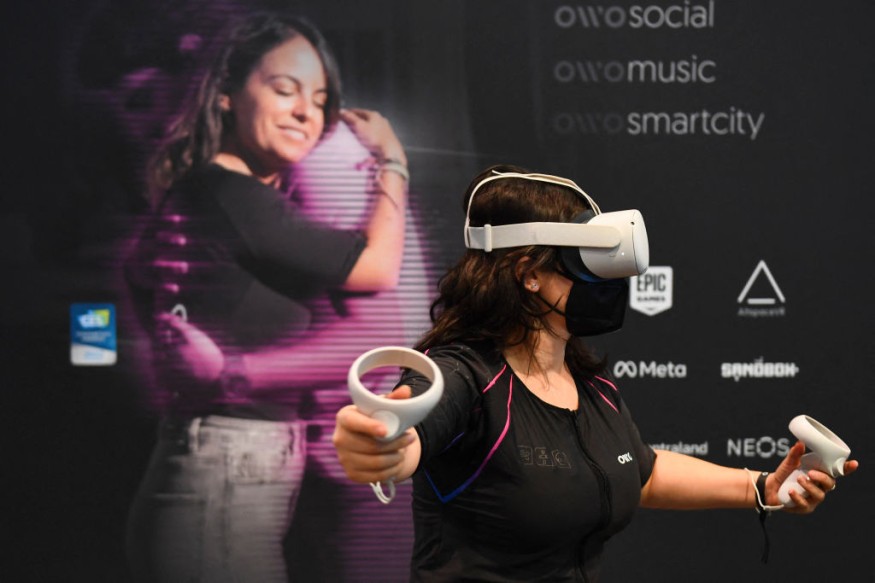
As the world has gone more virtual than ever, the metaverse is no longer a futuristic concept in sci-fi books and movies. The technology today allowed creators to make this concept a reality that people can interact with and visit.
With the metaverse becoming mainstream, people have been spending time in it and found that virtual dating is also possible. Metaverse dating platforms enable users to find real connections in virtual reality (VR) as easily as putting on a VR headset, signing up, and building an avatar to meet new people.
An attendee demonstrates the Owo vest, which allows users to feel physical sensations during metaverse experiences such as virtual reality games, including wind, gunfire or punching, at the Consumer Electronics Show (CES) on January 5, 2022 in Las Vegas, Nevada.
A Quick Guide to Metaverse
While the term "metaverse" is usually traced to the 1992 dystopic cyberpunk novel Snow Crash by Neal Stephenson, many see the 2011 novel Ready Player One by Ernest Cline as its recent inspiration. The concept of the metaverse is not new.
According to Time magazine, online communities emerged in the 1980s that grew in the 1990s with chatrooms, instant messenger, and the first social media sites. By the early 2000s, the game "World of Warcraft" has become a persistent social scene, and since then, communities have continued to sprout up around online games.
The innovation of the metaverse allows a more significant overlap of the digital and physical world that has become important for socialization, productivity, shopping, and entertainment. With the use of virtual reality (VR) glasses, users in the metaverse get to experience being near each other despite the actual distance.
But for tech specialists, the most exciting of the metaverse is what it means for relationships. Facebook and many startups are reportedly working on virtual dating apps, different types of metaverse, and dating in the metaverse.
ALSO READ: Metaverse Brings Back Ice Age Faunas, Woolly Mammoth Through Paleoart
How Does Metaverse Dating Work?
DatesVR is one of those metaverse speed dating platforms available online. It was founded by Marc Charlton and powered by metaverse developer AltSpace which hosts company events, digital fairs, and other virtual reality meetups.
Charlton told The Sun in an exclusive interview that he grew close to a meta-friend and eventually met up offline and now they are engaged. His case will not be the first meet-cutes in the metaverse, and definitely, not be the last.
According to the news outlet, users would have to sign up and build their avatars to join DatesVR's private speed dating. The avatars with real photos will be placed on islands where questions appear on the metaverse screens. Those who have similar answers will be placed in the same communities. Like common dating apps, DatesVR can notify users who share dating profile interests or those who belong to the same communities or geolocation.
Also, long-distance couples can enjoy a better experience of being with their loved ones beyond the classic video call. Their avatars can touch, hold hands, and even hug each other to keep the passion alive even at a distance.
Chris Crew, CEO of the virtual reality dating platform Planet Theta, said that metaverse dating is so much more immersive than texting or a Zoom call. It is like an intermediary to the traditional date, but users can get a better assessment of the other person to decide if they want to meet them face to face because in virtual reality, "you still get a lot of the nonverbal cues, the body movement, and the voice inflection and the timing."
Metaverse can be the future of virtual dating. DatesVR is powerd by AltSpace, a metaverse developer that hosts company events, digital fairs and more.
RELATED ARTICLE : Live Longer for 150 Years in Metaverse But Only If You Are Willing to Permanently Leave Your Physical Body and Become a Living App
Check out more news and information on Metaverse in Science Times.
© 2026 ScienceTimes.com All rights reserved. Do not reproduce without permission. The window to the world of Science Times.












